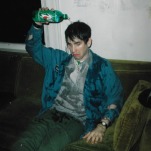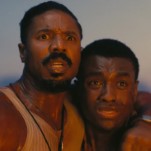12 Women Who Have Helped Transform the Comic Book Industry
As we reach the end of Women’s History Month, Paste reflects on some of the female voices that have helped diversify the comic book and strip industry, by both creating some of the most memorable works as well as paving paths that invited in larger audiences. This is by no means an exhaustive list and, admittedly, focuses more on modern figures than not (though we still have a deep admiration for pioneers like Ramona Fradon and Marie Severin). Ultimately, these figures have kept an entire medium on its toes, ensuring that comics are, and remain, for everyone.![]()

Photo credit: Guillaume Paumier
Lynda Barry
Ernie Pook’s Comeek, What It Is
![]()
Running in alternative newsweeklies nationwide, Lynda Barry’s messy, vibrant work greeted eyeballs scanning for events listings and local news. If you read “Ernie Pook’s Comeek” every week, it ended up becoming an addiction, not a distraction. Her characters—male and female—were equally messy and, therefore, real. Built in four panels for the most part, week after week, these strips showed new possibilities for the form while being utterly individual in their approach and their characters. In Barry’s work, characters like Marlys, Maybonne, Freddie and their friends and family dealt with Big Social Issues and the everyday horrors of almost-adulthood. Barry’s teaching and more recent series of books about creativity are likewise encouraging artists old and new to loosen up and face their fears about doing something weird. Hillary Brown

Photo credit: Emily Horne
Kate Beaton
Hark! A Vagrant
![]()
Women probably don’t get enough credit for nerding out about historical detail to the same extent men do. Hence: Kate Beaton. She’s quick with a joke, unafraid to put her sketches up online and a hard-core devotee of Canadian history, classic literature, the Elizabethans, etc. She balances the adorable with the fiercely smart, even when crafting stupid jokes. And, of course, she helped create “Strong Female Characters,” perhaps the swiftest and finest put-down of what passes for feminism in comics. Hillary Brown

Photo credit: Elena Seibert
Alison Bechdel
Fun Home, Dykes to Watch Out For
Alison Bechdel has published only two standalone graphic novels, but even if she had only written and drawn one, Fun Home would merit her placement on this list. Rich and complex enough to fuel thousands of college syllabi, the graphic novel has proven to be an essential gateway drug to comics, rooted in the author’s tragic childhood and emerging sexuality. Bechdel’s contributions from her long-running strip, Dykes to Watch Out For, are equally important in their parallel accomplishment: ushering queer characters to the forefront with casual grace, just as reading Fun Home provided comic agnostics with a sophisticated-yet-accessible gateway. And her eponymous test for assessing how well a work of entertainment treats women like people remains (somewhat unfortunately) relevant. Hillary Brown
![]()

Photo credit: DC Comics
Karen Berger
Vertigo Comics
![]()
-

-

-

-

-

-

-

-

-

-

-

-

-

-

-

-

-

-

-

-

-

-

-

-

-

-

-

-

-

-

-

-

-

-

-

-

-

-

-

-
















































